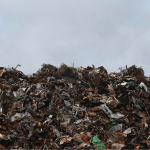The Food Waste Epidemic
There is a worldwide epidemic when it comes to food production vs. food consumption. One third of all of the food produced in the world for human consumption goes uneaten. This would probably explain why 870 million people worldwide are starving every day. It also explains the amount of leftover waste, and the financial and environmental implications that come along with it. It has been estimated that not only does this food waste epidemic cost $750 billion a year, but it also “costs” 3.3 billion tons of greenhouse gases.
Solving the Food Waste Epidemic
Food Waste in the United States
While it is undoubtedly a worldwide problem, it is shocking that in a developed country like the United States there is such a food waste problem. Fifty-two million tons of food is wasted each year in the United States, which costs around $218 billion. This does not only affect the businesses that lost revenue over wasted food, but also the consumers that pay for the food and waste it, as well as the people who are affected by this and therefore lack access to food regularly. Eighty-three percent of the food waste epidemic in the United States occurs in grocery stores, restaurants and in consumers’ homes.
Efforts to Combat Food Waste
There have been multiple efforts, some small-scale and some large-scale, to help combat food waste. There have been, however, more large-scale solutions in development recently due to the severity of the issue. The Environmental Protection Agency, for example, developed a Food Recovery challenge so that citizens of the United States can help prevent and divert wasted food. Another large-scale solution to the food waste epidemic is the ReFED program. This is an effort to try to reduce the amount of food waste by at least 20 percent within a decade of its start time. Reducing the amount of food waste that the United States creates has a positive impact on the economy, the environment and society.
How to Recycle Food Waste
The previously mentioned ReFED program is a huge help in the recycling process of food waste. They have 3 main principles for the solutions of food waste. Those include the prevention of food waste, recovery of food waste and recycling of food waste. The prevention part of this hierarchy is the first and most important step: stopping waste from occurring. Some things people can do for prevention are consumer education, standardized date labeling and packaging adjustments. The recovery solutions part of the hierarchy center around redistributing food to people. Recovery efforts that can help with the reduction of food waste are donation tax incentives and standardized donation regulation. The recycling efforts in this hierarchy revolve around the efforts to repurpose waste as energy, agricultural and other products. The key concept behind the recycling efforts for food waste is diversion. This means that all food scraps from waste need to be diverted to organics recycling facilities. The other option for recycling efforts is to centralize compost the food waste. This effort can then create more compost for farming and environmental remediation markets.
Recycling Waste in New Jersey
Considering the magnitude of the worldwide food problem, there need to be various efforts made to combat food waste, whether large-scale or small-scale. At Cali Carting in Kearny, New Jersey, we offer commercial dumpster rentals throughout Northern New Jersey to help with waste and recycling efforts. We also offer services for dumpsters to help with bigger waste projects, other than food waste. Those include household waste and demolition debris. To learn more about our recycling waste services, contact us today.


